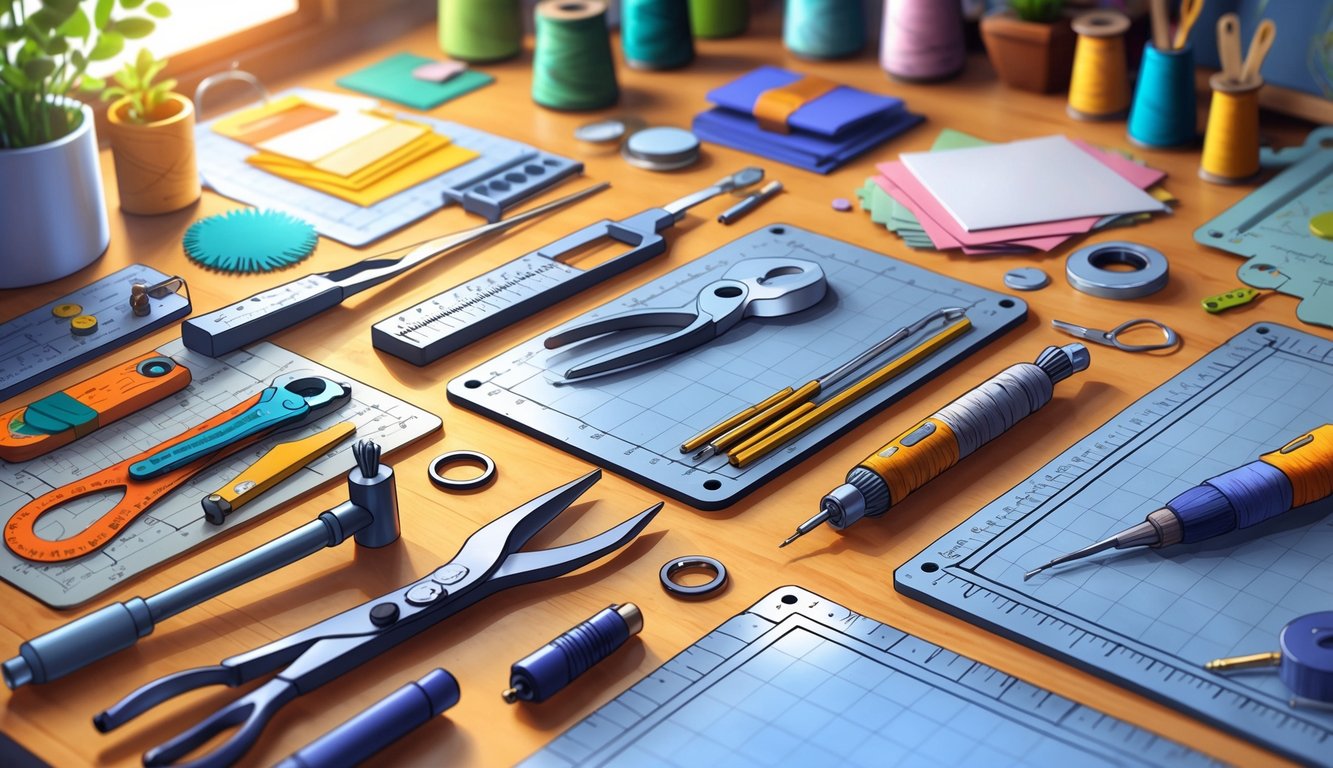
Niche and Specialized Craft Tools
Why do the best tools always end up in the bottom drawer, hiding like they’re embarrassed? The minute you try something tricky, everyone suddenly wants to borrow them. Nobody admits they’re essential, but honestly, they save hours and your sanity.
Wood Burning Tools for Artistic Detailing
Every time I plug in my wood burning tool, I waste ten minutes waiting for the light to turn on. Haven’t even burned anything yet. Even old-school woodworkers admit these weird tools totally change how you work—nobody mentions the smoke alarms, though. If you’ve never melted a tip trying to do fancy lettering, are you even really crafting?
Wood burning feels weirdly old and new at the same time. Everyone raves about hot-tip burners with thermostatic controls—supposedly “precision tips” matter, but I never remember which is which. At 800°F, you get crisp lines, unless you’re distracted and end up with double lines (which, by the way, don’t sand out). My hands shake, so stencils are my secret weapon—no shame.
Don’t cheap out on your pyrography tools. Go for variable-wattage if you want smooth heat changes. My neighbor, who’s cranky and retired from cabinetry, swears his decorated handles sell faster. “It’s the detail idiots miss that sells the piece,” he says.
I’ve burned through three pairs of “heat-resistant” gloves—turns out the cotton ones just catch fire. Wear a mask, because even pine smoke hangs around forever and nobody warns you. Bottom line: the real pros keep a wood burning kit nearby—smaller, hotter, more precise than half the “must-have” tools everyone talks about.
Foam Brushes and New Painting Trends
Paint brushes? Ugh, mine live in a crusty jar and never dry right. Foam brushes, though—say what you want, but I’ve never pulled one away from a project and found those nasty bristle bits stuck everywhere. That’s more than I can say for half my “good” brushes. Once saw a guy toss a foam brush across the room, and all I thought was, “Yeah, you’ll be picking paint out of your fingernails for days, genius.” The pros in furniture restoration circles? They’re always talking up specialty workshop tools for unique tasks, but honestly, the cheap foam brush is still the thing everyone uses when nobody’s looking.
Foam brushes don’t care if you’re slapping on oil or water-based paint. Edges stay sharp, and you can wedge them into corners without obliterating all your detail work. Met a guy at a mural class once—swore by the dollar-store foam for “choppy” texture, but the denser ones hold up for a few coats before falling apart. I don’t know, I just toss them. Nobody wants to clean up after polyurethane. I’d rather set the whole thing on fire than scrub that off.
Painting trends now? All about blending, ombre, the soft fade—try that with natural bristles and you’ll trash your brush before you even finish. I’ve used foam for milk paint, dye washes, metallics—honestly, they don’t drag pigment everywhere like my overpriced bristle set. Once microwaved a foam brush by accident (don’t ask, don’t do it, it’s a disaster). Melted into a gooey mess in seconds.
If you want fast, streak-free, modern finishes, foam brushes will absolutely destroy your old-school brushes. Just don’t expect them to survive shellac stripping. Even the best ones go to pieces after an hour, so, yeah, buy extra. Or just accept defeat and go back to bristles. Your call.
Plier Varieties Every Crafter Should Know
Pliers. I have a drawer full of them, and somehow, I still can’t find the one I need when I need it. Why do I own three different needle nose pliers and no wire cutters when I actually need them? Round nose pliers show up in every jewelry kit, which is great, but then you grab the wrong pair and suddenly you’re mangling wire instead of looping it. I don’t know, maybe tool drawers just eat things.
Round Nose Pliers in Jewelry and More
Everyone talks up the feel, the grip, blah blah, but honestly, round nose pliers just don’t hurt my hands the way the others do. Try explaining that to someone who doesn’t make jewelry. The rounded jaws? Perfect for looping sterling wire without leaving scratches everywhere. If you’re trying to make jump rings or those little curly bits, forget regular pliers—these are the only ones that won’t make you want to scream.
Borrowed a friend’s round nose pliers once for a wire-wrapping class. Put a dent in my loop and learned the hard way: people who know what they’re doing will pay for brands like Xuron or Lindstrom, and apparently, that’s not just snobbery. Handmade sellers keep these in reach for jewelry, sometimes even electronics, but I’ve watched people try to snip wires with them and honestly, don’t. It’s a mess. For anyone who cares, round nose pliers are essential for wire loops. Fixing a clasp with the right tool can be the difference between selling or tossing your work. Not that I’m bitter.
Wire Cutters and Needle Nose Pliers Explained
I’ve pinched my fingers on so many wire cutters trying to figure out which ones don’t suck. “Flush cut” is the magic phrase if you want a clean snip on sterling or copper. Use basic cutters and you’ll just launch metal bits across the room (ask me how I know). Good ones are usually carbon steel, and people get weirdly intense about burrs.
Needle nose pliers? Total lifesaver. I’ve untangled old radio wires and made earrings with the same pair in the same afternoon. The narrow jaws help with tiny rings or tight spots—though sometimes I feel like I’m all thumbs anyway. Smaller ones for jewelry, bigger ones for electricians—though I swear, I’ve rescued more dropped beads than any professional has ever fixed wires. Try to cut something thick, though, and you’ll realize these things have limits. Sometimes I forget and try anyway.



